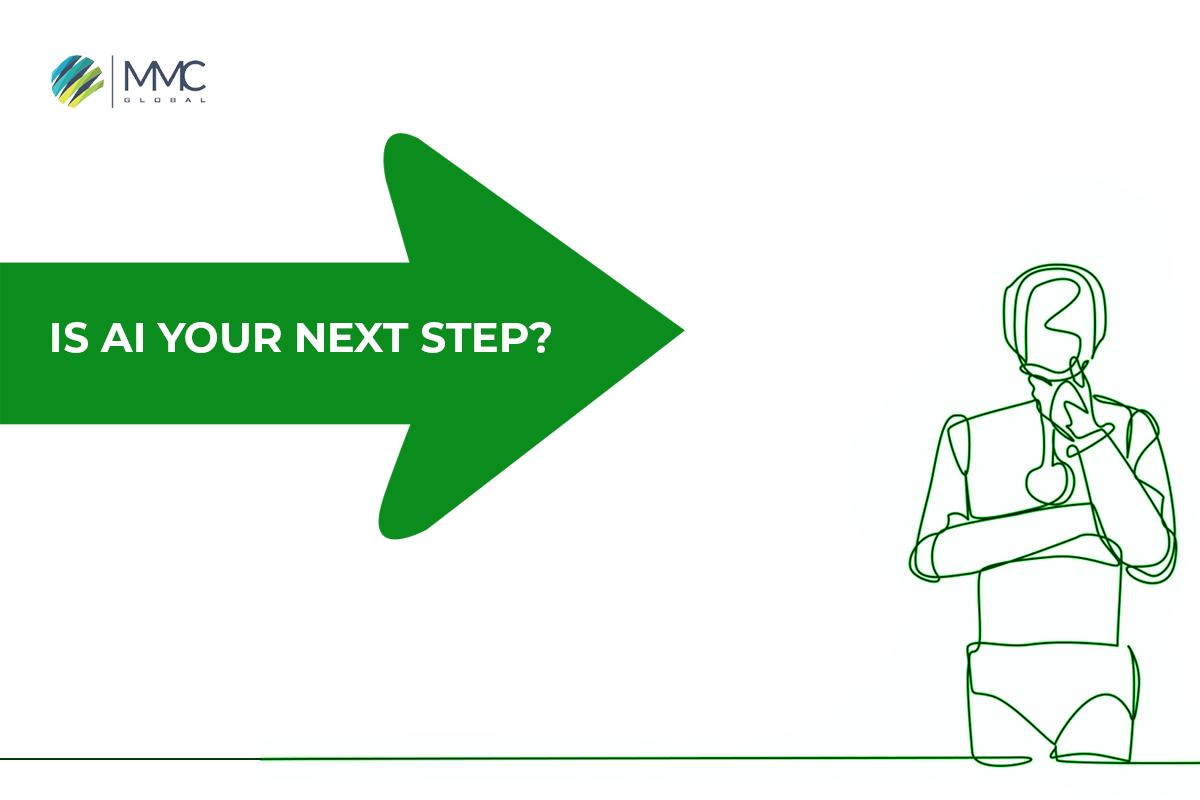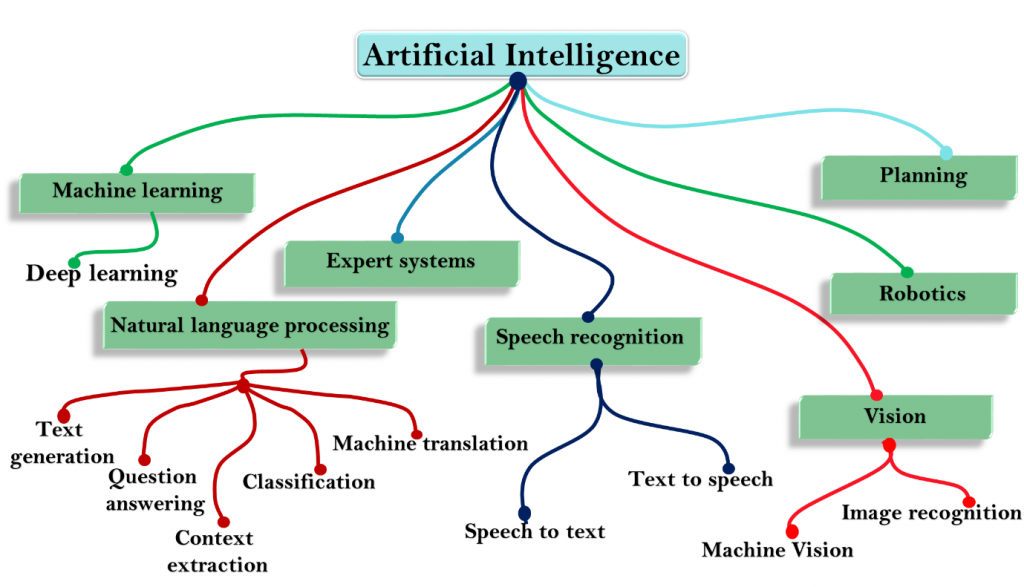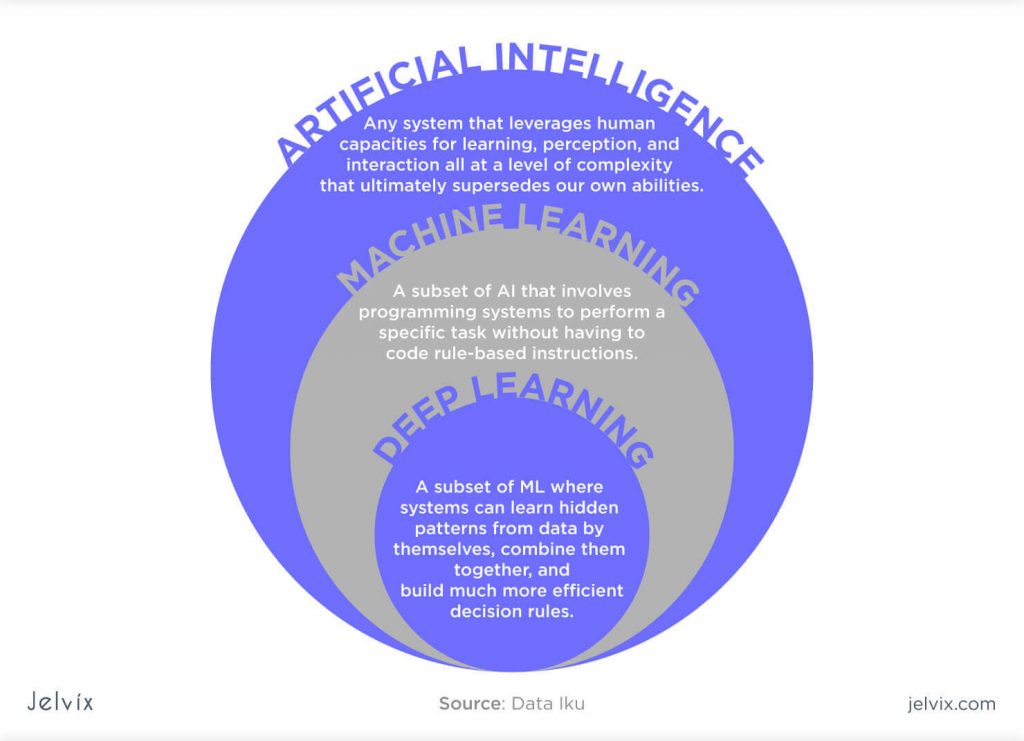7 Trends Of Artificial Intelligence & Machine Learning


Artificial Intelligence & Machine Learning: Top 7 Trends For AI and ML You Need To Watch Out
If you are the one who thinks Artificial Intelligence, Machine Learning, and Deep Learning are the same, then you are in the wrong boat. It is a big revolution in the tech world where people see growth, scalability, and flexibility in their business operations.
Although these buzzwords are confusing and used interchangeably, it is not what it is. Asking five people around you about artificial intelligence, machine learning, and deep Learning, I bet you will get five different answers simultaneously.
So, let’s be clear about these critical, cutting-edge technologies because I have conducted thorough research with professionals who have helped me to understand the differences between AI, Ml, and DL.
What is Artificial Intelligence Development?
Artificial intelligence is one of the broad-spectrum terms that includes Machine Learning and Deep Learning. AI Technology is the technology that has the tendency to think like a human and helps to automate human tasks with maximum efficiency and less human error.
The core idea behind artificial intelligence development is to use a set of rules or algorithms to integrate human intellect into computers.
It is used in making software and applications that help to include automation, prediction, recommendation and recognization, communication, object detection, digital assistance, etc.
Businesses cut down their extra cost, save time, run operations 24/7, and more to escalate this competitive edge. Various top-notch industries use artificial intelligence development, such as healthcare, eCommerce, retail, insurance, real estate, fashion, food, restaurants, etc.
Three significant aspects of AI focus on acquiring efficiency at a large scale: Learning, reasoning, and self-correction. Moreover, to build apps that integrate with AI, you have to pick AI developers as they are specialized in playing with complex algorithms and logic.
Read more: Artificial Intelligence technology in Medical & Healthcare
What is Machine Learning?
With the aid of data, ML enables systems to understand their experiences and get better over time automatically. As I mentioned, machine learning is a subset of artificial intelligence technology. Those machines that proceed by learning a dataset to analyze the behaviour or pattern of the end users is called machine learning.
To sum up, machine learning is the use and creation of computer systems that can learn and adjust without being given explicit instructions by analyzing data patterns and drawing conclusions using algorithms and statistical models.
ML focuses on creating software that can access data and utilize it for its own purposes. The entire process makes observations on the data to spot any emerging patterns and help decision-makers make better choices in the future based on the examples given to them. Allowing systems to learn on their own via experience without any type of human involvement or help is the primary goal of machine learning (ML).

What is Deep Learning?
Artificial neural networks, a class of algorithms inspired by the structure and operation of the brain, are the focus of the machine learning discipline known as deep Learning. Deep Learning is a concept that leaders and professionals in the industry have opinions about, and their particular and nuanced viewpoints help to clarify what deep Learning is all about.

For instance, driverless cars use deep Learning as a vital technology to detect stop signs and tell a pedestrian from a lamppost apart. Voice control on consumer electronics, including hands-free speakers, tablets, TVs, and smartphones, is essential. Recently, deep Learning has attracted a lot of interest, and for a good reason. It is producing previously unattainable outcomes.
To sum up, to possibly recognize patterns and classify information in accordance with them, DL algorithms concentrate on information processing pattern mechanisms. Compared to ML, DL uses more extensive data sets, and its prediction method is self-managed by the computer.
Artificial Intelligence Vs. Machine Learning Vs. Deep Learning

| Artificial Intelligence | Machine Learning | Deep Learning |
| Artificial intelligence development, or AI development, is the study or method that allows computers/software/apps to emulate human behaviour using a specific algorithm. | Machine learning, or ML, is the study that uses statistical techniques to enable machines to get progressively better. | Deep Learning, or DL, is the research that uses neural networks (which resemble the neurons in the human brain) to mimic human brain function. |
| The substantial and broad spectrum that includes ML and DL as its constituents is AI. | Machine learning is the subset of AI under control over AI technology. | Deep learning is the subset of machine learning based on artificial neural networks with representation learning. |
| Artificial intelligence development is a computer algorithm that demonstrates intelligence through judgment. | Machine learning (ML) uses AI algorithms to enable systems to understand and respond to data. | DL is a machine learning algorithm that analyzes data using deep (more than one layer) neural networks and produces results. |
| AI uses search trees and a lot of complex arithmetic. | The ML component is defined if you understand the underlying logic (math) and can envision sophisticated functions like K-Mean, Support Vector Machines, etc. | If you know the mathematics involved but have no notion about the features; you may break down complicated functionality into features that are straight or lower dimensions by adding further layers. This defines the DL aspect. |
| Instead of perfection, the goal is to improve the probability of success. | The goal is to improve accuracy while paying little attention to the success rate. | It achieves the most fantastic accuracy ranking when trained with a lot of data. |
| Artificial Narrow Intelligence (ANI), Artificial General Intelligence (AGI), and Artificial Super Intelligence are three main categories or kinds of AI (ASI) | Supervised Learning, Unsupervised Learning, and Reinforcement Learning are three main categories or kinds of ML. | DL may be viewed as one of the four basic network designs’ neural networks with many parameters: Convolutional neural networks, recurrent neural networks, recursive neural networks, and unsupervised pre-trained networks. |
| The effectiveness of ML and DL, respectively, fundamentally determines the effectiveness of AI. | Less effective than DL since it can’t handle larger data sets or dimensions. | More effective than ML since it can readily handle more data sets |
The Impact Of Artificial Intelligence and Machine Learning
The practical impact of Artificial Intelligence and Machine learning on business re countless; a few of them are given below:
- AI and Ml help to cut-down operational costs by reducing the workload, for example, embedding a chatbot on your selling point to reduce the headcount of the customer support agents.
- Artificial intelligence helps to provoke effective decisions that elevate business growth. Machine learning assists in studying data automatically or without human intervention to build positive decision-making.
- AI and Ml reduce human errors by getting trained all the time and give a masterful performance whether it is integrating on mobile apps, web apps, or any software.
- Artificial Intelligence and Machine Learning automate human tasks and save employees time to do something else that AI and ML can not do.
- Without any biases, AI and Ml produce results based on tons of data.
- Doctors in the health care industry also leverage AI technology in operation theatres, detecting lung cancer through the latest artificial intelligence blood testing, using AI ageing clocks to predict the immune system, and much more.
Read more: What is AI Development? 6 Ways to Use AI in Mobile App Development
Top 5 Machine Learning and Artificial Intelligence Trends for 2022
AI and ML have seen some critical advancements in recent years. 2022 will be a pivotal year for improvements in existing discoveries and the emergence of new trends in AI and ML as researchers investigate methods to make machines quicker and more intelligent than before.
Here are the 7 Artificial Intelligence and Machine Learning trends you need to watch out for in 2022 & Beyond.
Hyper Automation
As you see, “Hyper” means extensive or extreme automation that you have never experienced yet. With AI and Ml, you will share hyper-automation that assists in.
- OCR-based document comprehension (Optical Character Recognition)
- Use NLP to interpret emails (Natural Language Processing)
- Automate restocking and stock forecasting,
- And much more.
Using pre-built modules distributed via an app store or organizational repository, hyper-automation simplifies integrating AI and machine learning capabilities into automatons.
According to Gartner, the US healthcare provider CVS Health has used hyper-automation to streamline its cumbersome benefits administration procedures, enhancing productivity, accuracy, and customer satisfaction.
Cybersecurity
In 2022, the field of cybersecurity will become increasingly important as machines become more complex. It’s hardly unexpected that hackers develop novel, riskier ways to target people and businesses as technology advances. Additionally, many of these attacks are launched via the internet. Along with data theft and privacy breaches, the constant threat of whole organizations being destroyed by cyberattacks.
Thankfully, increased cybersecurity powered by artificial intelligence and machine learning is here to strengthen cyber defence. Sensitive data in the virtual world will undergo a revolution thanks to AI-integrated online security measures since AI and ML rely on understanding their surroundings.
Internet of Things
The Internet of Things, or IoT development, is the collective term for the billions of internet-connected objects constantly sharing data online. IoT can include everything from a web-connected smart refrigerator to a highly advanced robot. In 2022, IoT is already anticipated to be a game-changing technology. IoT devices will become more capable of analyzing, transmitting, and exchanging sophisticated information as the transformation of AI technology continues to progress.
The main areas that involve a confluence of AI and ML, according to DZone (operations, logistics, and supply chain), are:
- Wearables (fitness, health trackers, heart rate monitoring apps, smartwatches)
- Smart Home (lights, thermostats, smart TV)
- Smart City (intelligent energy grids, street lighting, and mobility)
- Smart Industry
Natural Language Processing
Machines can comprehend and analyze human language thanks to a branch of artificial intelligence known as natural language processing (NLP). Human language is more complicated, ambiguous, and convoluted than machine language, and NLP analyzes and interprets it to provide understandable results.
Computers can carry out activities like voice recognition, language translation between languages, keyword analysis, and more with the help of NLP. The voice assistants that come with cellphones are an example of NLP. Voice instructions are inputs by assistants like Alexa, Cortana, Google Assistant, Bixby, and others, who then produce results accordingly.
Metaverse
The phrase “metaverse” has recently entered our lexicon thanks to Mark Zuckerberg’s grandiose endeavour, Meta. The metaverse is a shared digital environment, similar to a virtual world, where users can collaborate and have fun while sharing their developed immersive experiences.
AI will undoubtedly play a significant role in the metaverse since it will contribute to creating various online settings, assist humans with activities, or even play partners in (video) games, as is now the case.
Ending Notes
Artificial Intelligence technology revamps operational tasks without human assistance, making business operations fast, flawless, and on time. Understanding the need for artificial intelligence and machine learning is a long way to go. But we see the tragic involvement of this technology is terrific.
You will see more innovation in AI, ML, and DL technology because it is still not mature as scientists are expecting. Moreover, the existing capabilities of artificial intelligence technology and machine learning are undeniable.
So, if you plan to build an AI-based app, it’s high time to kickstart development without further ado.
Hiring experts and techie professionals is not a big deal if we are here. We want you to trust us and share your ideas in your mind. Our experts are highly engaged with AI technology and trends, so utilizing them is the most satisfying.
FAQs Related To Machine Learning & Artificial Intelligence Technology
Natural language generation, speech recognition, virtual agents, machine learning platforms, AI optimized hardware, decision management, deep learning platforms, biometrics, robotics automation, text analysis, cyber defence, compliance, knowledge worker aid, content creation, emotion recognition, image recognition, and marketing automation.
To summarize, AI handles problems that need human intellect, whereas ML is a branch of AI that handles particular issues by learning from data and generating predictions. It follows that while all AI is machine learning, not all AI is machine learning.
Our developers are specialized in AI development and have done multiple projects based on AI and Ml technology. Our work methodology is intensive as we thoroughly follow all product development cycles. If you need further information or share your idea to start AI-based app development, we are here to help.
